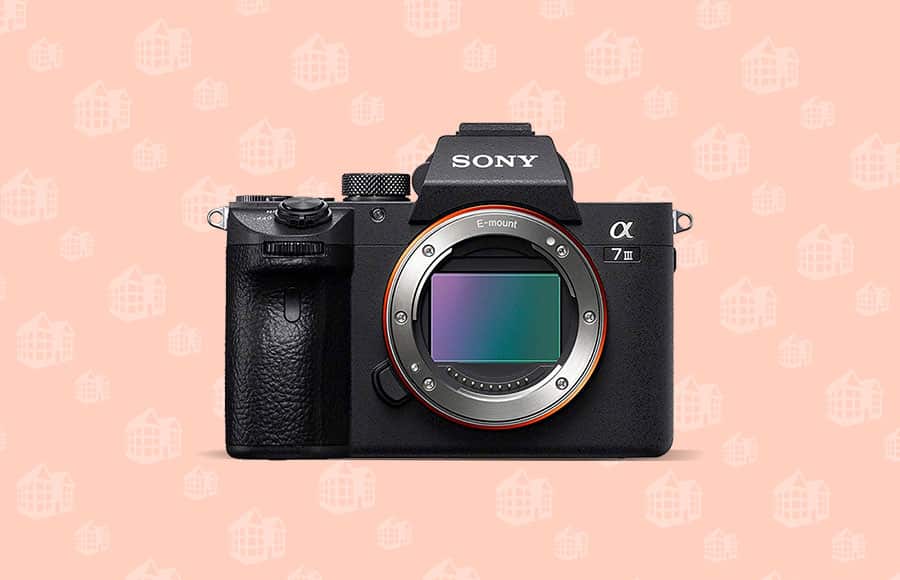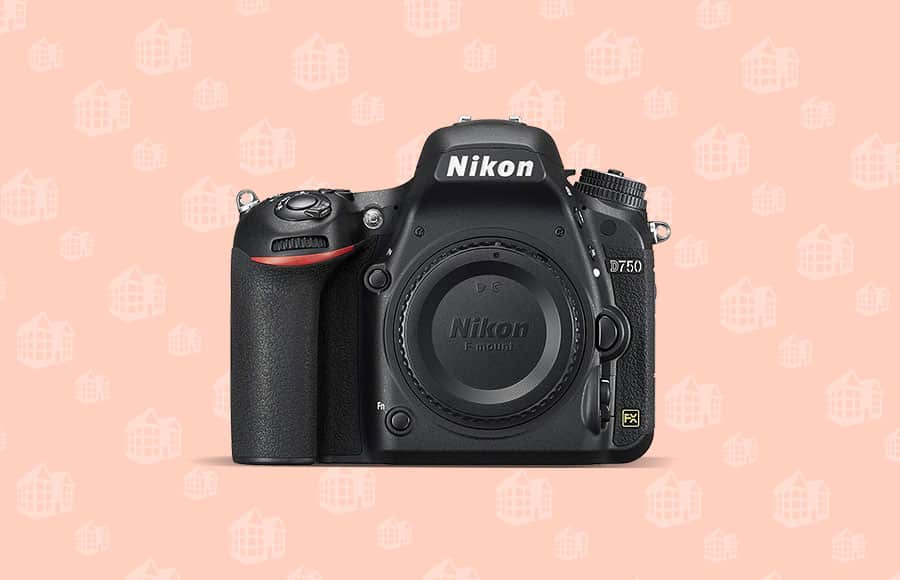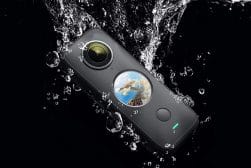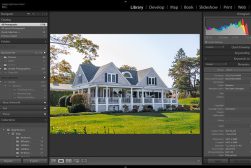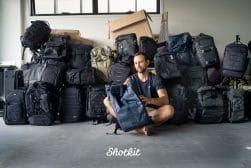
Best Camera for Real Estate Photography
Real estate photography is a gaining in popularity here in 2023. This article breaks down the 4 best cameras to capture images of property and buildings.
By Greg Cromie
More and more photographers are interested in finding the best camera for real estate photography. Why? Simple – there’s good money to be made in this industry!
As a skilled real estate photographer, you have the opportunity to shoot regularly for your local realtor or estate agent.
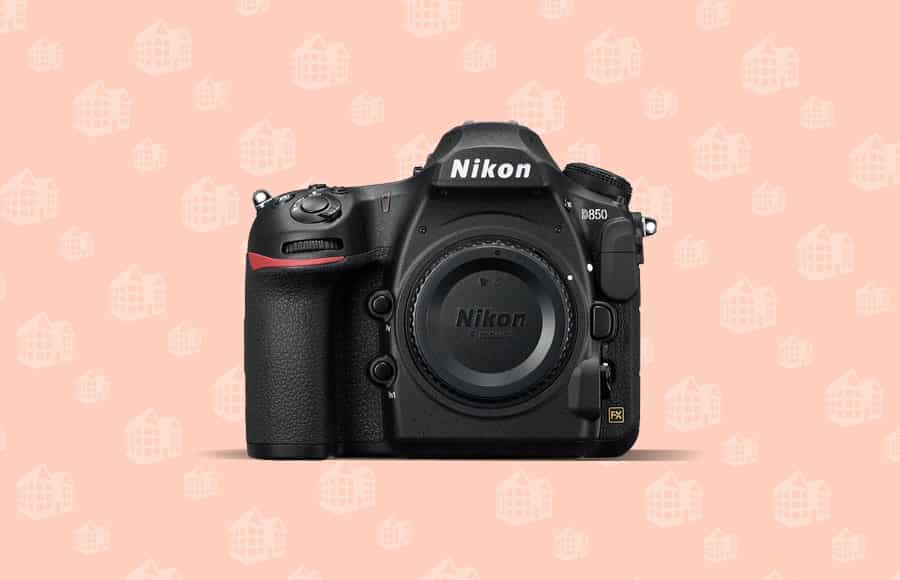

Ultra-high resolution sensor combined with a robust body and tilting touch screen make this a top choice for real estate photography.
There’s also the chance to expand your work into hotel or resort photography, which can be both enjoyable and lucrative.
Or, perhaps, you’re an architect or landlord who simply wants a way to photograph your properties.
Whatever the case, investing in one of the cameras reviewed in this article will set you up for success when photographing buildings and interiors.
You’ll also want to get the right photo editing software for real estate photography too.
Best Camera for Real Estate Photography in 2023
| Image | Product | Features | |
|---|---|---|---|
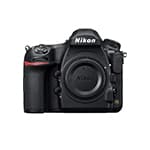 | Nikon D850BEST ALL ROUND |
| View Price → |
 | Canon 5D Mark IVHIGHLY RECOMMENDED |
| View Price → |
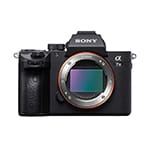 | Sony a7 IIIGREAT VALUE |
| View Price → |
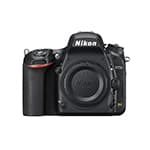 | Nikon D750BEST BUDGET |
| View Price → |
1. Nikon D850
Sensor: Full-Frame | Resolution: 45.7MP | Monitor: 3.2-inch tilt-angle touchscreen, 2.359K dots | Autofocus: 153-points | Max frame rate: 9fps | Video: 4K at 30p | Weight: 539g (1.18 lb) More Info: Nikon D850 Review
- 45.7-megapixel full-frame sensor
- Exceptional low light performance
- Comfortable ergonomics
- Easy controls
- High-resolution LCD touch screen
- Wide variety of lens options available
- In-camera HDR bracketing
- Pros here
- 30 min limit on 4k video files
- WiFi/Bluetooth can be unreliable
- Limited AF point coverage when using OVF
When it comes to real estate photography, you want a camera that’s reliable, capable, and will produce punchy images to sell a lifestyle.
There’s a very good reason why the Nikon D850 has appeared at the top of our list and appears in a lot of our other gear guides too.
The Nikon D850 is one of the most sought after pro-level DSLR cameras on the market. What’s more, thanks to its design, tech and performance, it’s without a doubt one of the best cameras for real estate photography.
Thanks to a whopping 45.7-megapixel image sensor, you’ll capture a huge amount of detail in your real estate photos. In post-processing, you’ll be able to fine-tune light, colour and dynamic range to ensure an optimal image of any property.
Further to this, the image sensor is superior when it comes to capturing detail in bad lighting conditions such as indoor room shots. With the D850, you can transform a dim room into a bright and airy space.
From a design perspective, this camera sells itself as a serious and professional tool of the trade. With an organic and curved body design, it sits comfortably in the hand.
The folks at Nikon have been in the camera business for a very long time so they know what you need when it comes to the real estate photography business.
All of the function buttons, external ports and control dials are obvious and well-positioned to ensure easy access and control. There’s nothing worse than being in the middle of a shot and not being able to reach a button to make a necessary change.
Nikon DSLR cameras are known for having an abundance of control options on the exterior of the body. To a novice, this level of available controls could be overwhelming – but this is a pro-level DSLR with optimal performance in mind.
In reality, using the Nikon D850 makes the overall workflow simpler and more efficient.
The camera has a large, clear Optical Viewfinder (OVF) with a 0.75% magnification ensuring that you have a clear composition in the frame.
Menus and image reviews are accessed on the rear 3.2″ LCD touch screen with an impressive 2.359K dots of resolution – that’s one of the most impressive monitors available.
The screen is also used to select a focus point and trigger the shutter for greater convenience. It can flip outwards to give greater flexibility when composing your real estate shots.
The Nikon D850 has a secondary monitor that’s located on the top plate of the camera – this provides primary shooting settings at a glance.
When it comes to shooting real estate, you’re going to need an assortment of premium lenses suited to the D850.
Fortunately, Nikon makes lenses for their full-frame cameras that are high performance and optically brilliant. Further to this, a number of third party manufacturers produce a range of high-quality lenses to suit this camera.
Ideally, you’re going to need a wide-angle lens, especially for indoor shots to capture as much of the space as possible without making it feel cramped.
A key element to real estate photography and selecting a camera is the inclusion of effective HDR bracketing. Fortunately, the D850 has the ability to take two exposures of a single shot – these can then be merged in-camera to ensure that you have an image with a perfect balance of light.
While in real estate photography the subjects tend to remain still, the Nikon D850 does boast a great autofocus system with up to 153 focus points.
Property investors also want to see virtual tours of real estate to aid in making a purchasing decision. Fortunately, the Nikon D850 is able to capture UHD 4K video at 30fps. While not the best video output available, it’s still amazing quality and will impress your clients.
Another pro-level feature of this camera is the inclusion of dual memory card slots – one is for a UHS-II SD card and the other is for the larger and much faster XQD card.
Like with any respectable real estate transaction, it’s time to talk about price. The Nikon D850 is a pro-level DSLR camera perfectly suited to high-quality real estate photography.
With that level of performance and reliability, it’s priced at around US$2,300 (check here for the latest price).
If you’re looking for the best camera for real estate photography, then a professional-grade DSLR is the perfect solution.
The Nikon D850 fits the bill thanks to its impressive full-frame sensor, comprehensive features and overall performance. Most importantly, it delivers exceptional image quality to ensure a property is best represented in time for auction day.
2. Canon 5D Mark IV
Sensor: Full-Frame | Resolution: 30.4MP | Monitor: 3.2-inch, 1.620K dots | Autofocus: 61-points | Max frame rate: 7fps | Video: 4K at 30p | Weight: 890g (1.96 lb) More Info: Canon 5D Mark IV Review
Dimensions: 151 x 116 x 76 mm (5.9 x 4.6 x 3.0 in.)
Weight: 890 g (1.96 lb)
- 30.4-megapixel full-frame sensor
- Incredible low-light performance
- Beautiful colour rendering
- User friendly
- Deep and comfortable grip
- Lots of lens options available
- Excellent focusing system
- Durable build
- Fixed screen – no articulation
- Heavy
- 4k video limited to 30 mins
Canon is another one of those familiar names when it comes to cameras at both the compact and pro-level DSLR range.
The Canon EOS 5D Mark IV is a professional full-frame DSLR that’s perfect for real estate photography.
And, much like the Nikon D850, there’s a very good reason why this Canon appears in many searches and articles for best camera fit for purpose.
The 5D Mark IV is a serious contender for the best camera for real estate photography thanks to a great combination of style, build, performance and, of course, output.
It features an impressive 30.4-megapixel image sensor and the DIGIC6+ processor – a combination which delivers incredible low-light performance and image quality.
You’ll be sure to capture crisp and clear detail in every image, allowing you to best represent a property to potential buyers.
When it comes to design, the Canon 5D look is instantly recognisable thanks to the soft curvature of the camera body and the way that buttons and dials blend into the shell; unlike the Nikon range where such features tend to stand out more prominently.
Further to this, ergonomic consideration is evident as all of the key function buttons and dials are well placed and sized for ease of use.
The large grip on the Canon 5D Mark IV is deep and very comfortable – this is critical especially as some Canon lenses can be very heavy.
The top of the camera is home to a monochrome LCD monitor to enable quick access to vital shooting information.
It’s no lightweight as it’s just on 890gm (1.96lbs), and when paired with a suitable wide-angle lens makes a hefty kit. Fortunately, a lot of real estate photography takes place with the camera mounted to a tripod.
For those looking for a DLSR camera such as this, there’s a huge range of Canon and third-party lenses available.
As the Canon 5D Mark IV is a full-frame DSLR, it has an OVF (or Optical Viewfinder) with a 0.71x magnification.
The rear of the camera is home to a big, bright 3.2″ LCD with 1.440K dots of resolution. Unfortunately, the screen is fixed and has no flip or rotation features.
For a pro-level camera, this is a shortcoming as most high-end cameras now feature some form of screen articulation.
The focusing system on the Canon is brilliant and a step up from a lot of models on the market. The autofocus utilises 61 cross-type focusing points that can be selected from the touch screen.
Imagine being able to set up a composition within a room and be able to simply select a key feature to be in focus.
Speaking of shooting indoors, the Canon EOS 5D puts its large sensor to good use when shooting in lower light. You’re not always going to have the luxury of great light when shooting real estate photography, so letting the camera compensate for this is key.
The camera has an ISO range of between 100 and 32,000 with an extended working range of 102,4000 – not that I’ve ever seen anyone shoot with ISO so high.
Image quality is second-to-none and you will not belive the sharpness, colour reproduction and contrast of your property photos from this camera. That 30.5-megapixel sensor is worth every little dot of resolution it produces.
When it comes to video output, the Canon 5D Mark IV is no slouch. Much like the Nikon, it can produce 4K video at 30fps and Full HD at 60p or slowed down to 120p. Being able to produce a quality video of a property is a great feature when paired with real estate images.
The Canon menu system is quite comprehensive but, more importantly, it’s easy to navigate and has a natural flow. There’s nothing worse than needing to deep dive into a complex menu just to activate a simple function.
Canon makes reliable and user-friendly cameras and the 5D Mark IV is no exception to that rule. It will be a consistent performer and will not disappoint when it comes to image quality and overall performance.
What’s more, it retails for around US$2,500 (check here for the latest price). When you consider the capabilities and benefits of using a camera like this for real estate photography, it pretty much pays for itself.
As a business tool, the Canon 5D Mark IV represents a necessary and positive investment. It’s clear to see why this is one of the best cameras for real estate photography.
3. Sony a7 III
Sensor: Full-Frame | Resolution: 24MP | Monitor: 3.0-inch TFT Touchscreen , 921K dots | Autofocus: 693-points | Max frame rate: 10fps | Video: 4K at 30p | Weight: 650g (1.43 lb) More Info: Sony A7III Review
Dimensions: 127 x 96 x 74 mm (5 x 3.78 x 2.91 in.)
Weight: 650 g (1.43 lb)
- Lightweight
- Wide, deep and comfortable grip
- Exceptional high ISO performance
- Excellent high-resolution EVF
- Fast and accurate hybrid AF system
- Incredible image quality
- Wide range of lenses available
- Sub-par rear LCD screen
- Some colour tweaking needed in post
- Confusing menu system
So far we’ve taken a look at two of the greatest full-frame DSLR cameras for real estate photography. But it’s also important to take a look at a high-end mirrorless camera well suited to this genre.
Sony develops and produces outstanding consumer electronic products and none shine brighter than their range of digital cameras.
The Sony a7 III is an excellent example of how a mirrorless camera can be employed for real estate photography.
What’s more, there’s a wide range of Sony lenses that are just as capable and optically brilliant for the job. Not only this, but other companies make lenses that are specifically designed for the Sony mount and perfect for real estate photography.
The Sony a7 III is a much lighter camera compared to some of the other cameras in our guide. Having a lighter camera for real estate photography makes a great deal of sense as you’ll be on the move and need to be highly mobile while on the job.
From a design perspective, Sony cameras are gorgeous and, in general, their design is more squared and modern than most DSLRs.
Ergonomically, the Sony is super comfortable to shoot with – and not just due to its weight. It has a wide and deep grip along with plenty of thumb-rest space on the back. This combination allows for longer durations of hand-held shooting.
All of the access doors that house terminals and memory cards are well fitted with tight tolerances to ensure a sleek design.
The top plate features a large prominent command dial for selecting core shooting functions. There’s also a secondary dial that’s more flush with the body. The buttons on the camera are well-sized, spaced and provide nice feedback when used.
A great feature of the Sony a7 III is that it has dual memory card slots so that you can customise your data management to capture RAW, JPEG and backup files – handy for real estate photography work.
Being a mirrorless camera, the Sony a7 III uses an EVF or Electronic Viewfinder in place of the traditional OVF and prism system.
The EVF is large and bright – it’s a 1.3cm XGA OLED with 2.359K dots of resolution and a magnification of up to 0.78x. Furthermore, the EVF can display a vast amount of information about camera performance, shooting settings and the like.
The flip side to having such a brilliant EVF is the less-than-brilliant rear LCD screen. It’s a 7.5cm (3.0″-type) TFT screen with only 921K dots of resolution. It’s surprising that such a high-tech and high-end camera has such a limited resolution on its main monitor.
The focus system on the Sony a7 III is incredible as it utilises a fast hybrid AF system that employs both phase-detection and contrast-detection AF. There are 693 phase-detection and 425 contrast AF points that cover 93% of the image sensor.
The camera also packs the Sony Exmor R CMOS image sensor with at 24.2-megapixel density. As a result, images from the a7 III are outstanding.
The photos captured on this camera are clear, crisp, with perfect contrast and good colour reproduction – some colours need to be tweaked in post-processing though.
However, overall image quality is great and will be perfect for real estate promotion and client attraction.
In low light, the Sony a7 III delivers reliable performance thanks to a native ISO range of 50 to 204,800 – that’s double what the Canon 5D Mark IV can deliver.
It should be highlighted that this camera has been tested as one of the best low light performers from Sony. As a result, you can be confident that even in the dimmest of properties, you’ll be able to capture clear and noise-free real estate images.
Video output matches most of the cameras in this guide with 4K video at 30p and the ability to shoot slow motion in Full HD at 120p. While not the best quality on the market, it’s more than enough for the kinds of video content used in real estate promotions.
So what does all of this mirrorless goodness cost? The great news is that you can pick up a Sony a7 III for around US$2,000 (check here for the latest price). With a price like that, the a7 III is a very attractive option and a strong contender for the best camera for real estate photography.
The Sony is a brilliant and highly acclaimed camera that’s lighter, cheaper and, in most ways, performs just as well as any of the other cameras in this guide.
4. Nikon D750
Sensor: Full-Frame | Resolution: 24.3MP | Monitor: 3.2-inch TFT LCD , 1.229K dots | Autofocus: 51-points | Max frame rate: 6fps | Video: 1080 at 60p | Weight: 840g (1.84 lb) More Info: Nikon D750 Review
Dimensions: 141 x 113 x 78 mm (5.55 x 4.45 x 3.07 in.)
Weight: 840 g (1.85 lb)
- Excellent value for money
- Good ergonomics
- Tilting LCD touch screen
- User-friendly
- Clear and sharp images
- Powerful autofocus sensor
- Good battery life
- No 4k video
- Buffer can be slow when shooting RAW
- Heavy
- Not weather sealed
We’ve already covered the fact that Nikon is one of the original and most reliable DSLR camera developers. It’s obvious that they make exceptional professional-level cameras and lenses that are ideally suited to real estate photography.
The highly capable Nikon D750 is by no means a competitor for the D850, but it’s a suitable alternative at a cheaper price and one of the best cameras for those on a budget.
In fact, at around US$1,500 (check here for the latest price) it’s the best value for money option we have in this guide. If you’re new to real estate photography, then this is a perfect solution for your property images.
The Nikon D750 has a familiar design and build thanks mostly to Nikon sticking to a good thing for a number of years. The camera body has an organic aesthetic thanks to the use of complex curves and ergonomic considerations.
As seen with the D850, all buttons and dials are quite prominent and the rear of the camera looks more complex than it actually is. The spacing is perfect and the space allocated for a thumb rest is great – this works well with the deep and comfortable grip to ensure comfort and control.
Access to the terminals and ports is easy thanks to clearly marked panels.
The top of the camera features the large single command dial as well as a pop-up flash and monochrome LCD. This sub-monitor displays all essential shooting and setting information.
The main monitor is a tilting TFT LCD touch screen with a viewing angle of 170 degrees. The screen boasts a resolution of 1,229K dots making it bright and ideal for reviewing your images or setting menus.
Speaking of menus, the Nikon D750 has a fairly easy-to-follow menu system that’s user friendly and makes perfect sense. The last thing you need is to be out on a property shoot and getting lost in a menu system before you can take your shot.
While Nikon boasts that the D750 is the lightest and smallest XF series camera in their range, it’s still hefty at 840g (1.85 lbs).
When it comes to image quality, Nikon has employed a great 24.3-megapixel sensor and their EXPEED 4 image-processing engine. While it’s a smaller pixel count than other cameras in our real estate photography guide, it’s still a full-frame sensor that’s great at capturing light and detail.
As a result, the images produced by the Nikon D750 are clear and sharp with a great balance of contrast and colour reproduction.
Regardless of shooting outdoors in full daylight or inside a dark room, your images will have fantastic resolution and clarity. Shooting real estate photography in low light is further supported by the ISO range of 100–12,800 in steps of 1/3 for fine control.
What’s more, thanks to the EXPEED 4 processor, images are quickly handled and stored to one of the two memory card slots. With this set-up, you can store RAW, JPEG and backup copies of your image on the camera. JPEGs are smaller files that can be quickly exported and sent to a client on the go.
The D750 has a very effective and comprehensive focusing system thanks to a 51 point AF and a powerful autofocus sensor – you’re sure to capture the clear and accurate focus of your subjects even if you’re in a hurry to get the job done.
When it comes to video output, the Nikon camera doesn’t offer 4k video and can only achieve Full HD at 60p – still a great quality of resolution but not up to the same standard as the other cameras in this guide.
When paired with a suitable Nikon or third party lens, the D750 makes a highly capable camera for real estate and property photography. What’s more, the money you’ve saved on purchasing a cheaper camera body can be invested in quality lenses to maximise your image outcomes.
In short, the Nikon D750 is the best camera for real estate photography for those on a tighter budget.
Frequently Asked Questions
What camera do you use for real estate photography?
In order to take professional-looking real estate photos, we’d recommend a high-resolution DSLR camera like the Nikon D850 or the Canon 5D Mark IV. If you prefer mirrorless cameras over DSLR, the Sony a7 III is also an excellent camera for real estate photography.
Do you need a full frame camera for real estate photography?
A full-frame camera isn’t necessary for taking great real estate photos. While a full-frame sensor can give you better dynamic range, detail and depth of field, you can still achieve professional-looking photos with a crop sensor if you master factors like composition, lighting and retouching.
Do I need a flash for real estate photography?
If you want to shoot real estate photography, a flash is a worthy addition to your photography gear. When shooting interiors, you’ll likely encounter dim or shadowy areas, dark spaces and backlit rooms that will photograph better with flash.
How can I make my real estate pictures look professional?
A good camera is just the first step to taking professional-looking real estate pictures. Also work to develop your understanding of lighting, improve your composition techniques, learn how to style spaces, and master the art of post-processing and retouching.
What camera should I buy for real estate photography?
If you need a camera for real estate photography, you should consider one of the following:
- Trisio Lite2
- Canon EOS Rebel SL3
- Canon EOS R
- Insta360 ONE R Twin Edition
- Panasonic Lumix DC-G9
- DJI Pocket 2
- Nikon D850
- Nikon D3500
Final Words
Real estate photography is all about delivering an efficient and professional outcome for the client or job at hand. Being able to work day or night and capture impressive, high-quality images of the interior and exterior of a property is key.
What’s more, you need the right tool for the job – a high-performing camera than can meet your needs. The best solution is to get yourself one of the pro-grade cameras for real estate photography we’ve listed in this guide.
Each of the cameras we’ve picked will ensure that your property photos are at a standard that will have your clients calling for your services again and again.
When it comes to real estate photography, another essential inclusion to your kit would be a quality wide prime or zoom. This way you can make the interior spaces look larger and less cramped than they actually are – a common trick of the trade.
If you’re looking at getting into real estate photography, then selecting one of the best cameras – like the full-frame or high-quality mirrorless cameras recommended above – will ensure your success.
Now check out this review of the Real Estate Photographer Pro course.


Ultra-high resolution sensor combined with a robust body and tilting touch screen make this a top choice for real estate photography.






